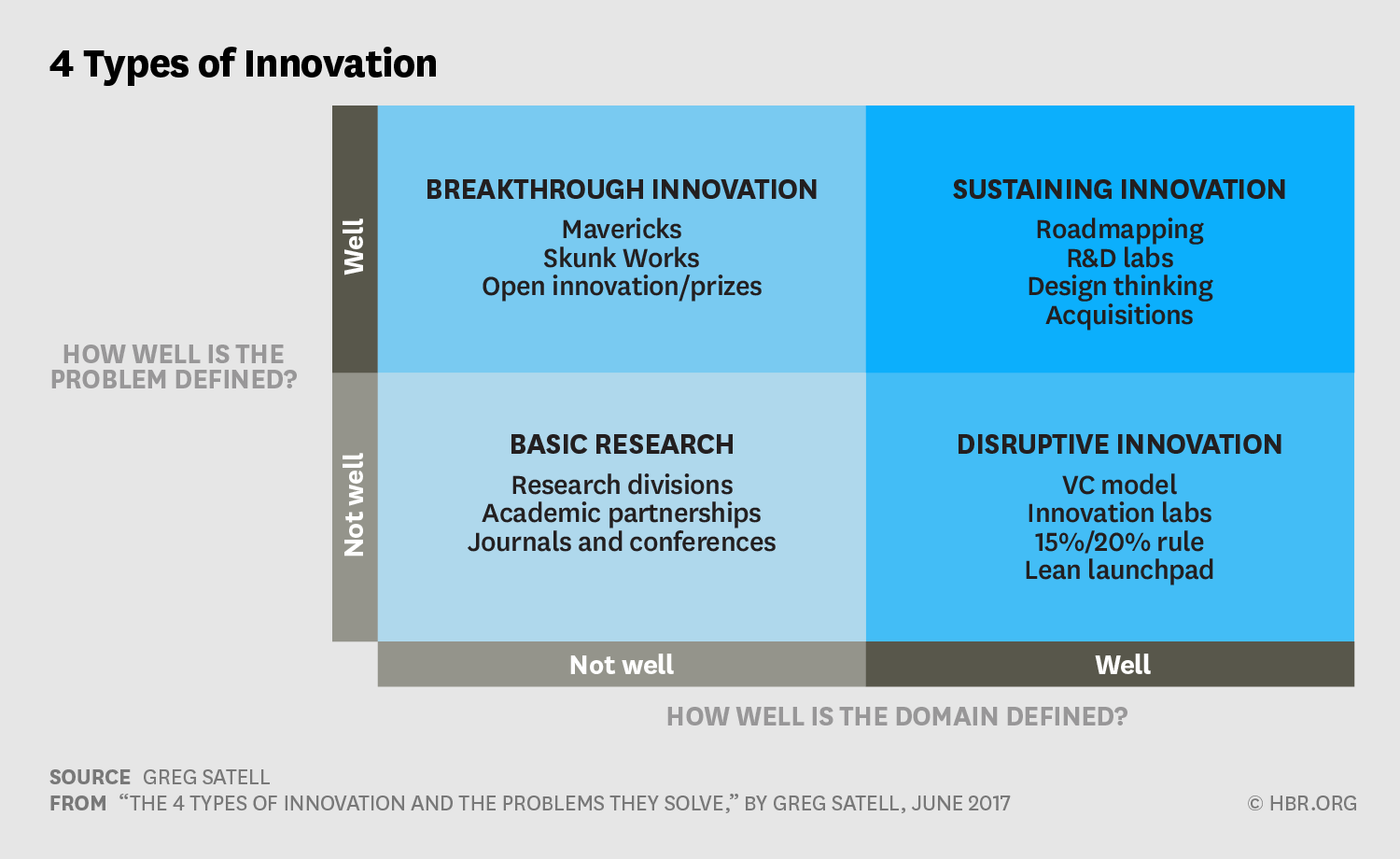4 Types of Innovation and how the psychology of the customer impacts this work
This matrix helps leaders identify the right type of strategy to solve a problem by asking two questions: How well can you define the problem? And how well can you define the skill domain(s) needed to solve it? Greg Satell
Greg presents a clear way that should alert anyone having to innovate in this difficult time. It’s a simple pathway to keep our eyes and ears open to solving business problems. The story about the clams is priceless.
The above matrix works very well with teams inside of an organization but how does it work defining the topic from the customer’s point of view?
Many times, the organization can improve how well the problem is defined by looking beyond what Clayton Christensen calls ‘data of the past’. We are all too often trying to define the problem using careful and conservative data sets (such as sales data) that we can easily mine and slice up new ways. It’s informative but it does not put you into the better quadrants.
When the problem is not well-defined you can still move up the y-axis by creating data sets based on the psychology of people and how they decide and what features they prioritize for the product. This is the road map to Product-market fit. Most of the companies have helped build doesn’t have the ability to wait for basic research or they can’t afford it. Too many companies attempt to do innovation without a clear understanding of the problem. They guess, they use leadership tactics that buy them another day but often don’t work.
So what is so wrong with predicting?
The x-axis, how well the domain is defined, is often not well understood also. Regardless, creating causal theories of why people make decisions will move you from left to right on the x-axis.
My passion is adding data where none existed before. Quantifying what is hard to define and hard to calculate Is a way of moving to a better quadrant and operate at a much faster pace.
